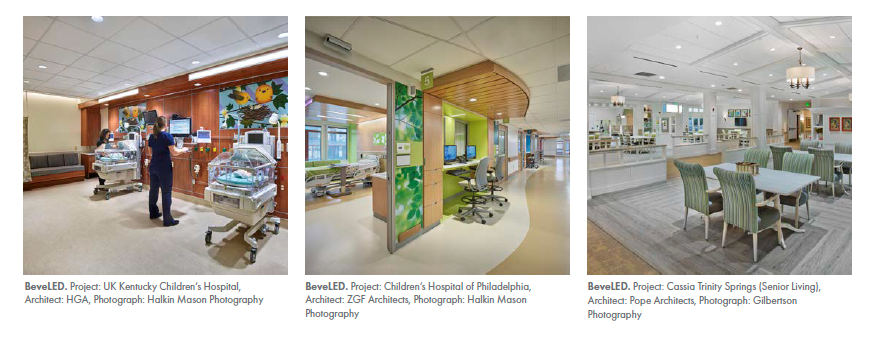On the light track to improved design for healthcare

Bonnie Littman, President and CEO of USAI Lighting
Research proves that exposure to the right light – at the right time – greatly impacts health, mood and well-being. Being surrounded with natural daylight over the course of 24 hours synchronizes circadian rhythms — the internal clocks that prompt sleep/wake cycles — while disruption to these rhythms can pose significant threats to health and diminish quality of life.
As a member of the Light and Health Alliance, USAI Lighting recently worked with Mariana Figueiro, Program Director at the Lighting Research Center at Rensselaer Polytechnic Institute, to stay up to date with research findings from the latest metric in lighting (and health), Circadian Stimulus (CS). This new metric predicts the amount of light affecting a person's circadian system vis-a-vis the extent to which the body's melatonin is suppressed after one hour of light exposure. Describing CS, rather than the traditional metrics of illuminance, within a healthcare setting can inform innovative and life-changing designs that better support patients and their caregivers.
As people grow older, the need for higher levels of CS increases naturally, and those living in long-term care facilities also typically have limited access to naturally lit spaces, often receiving less than 0.1 CS throughout the day — an unfortunate combination that is often considered as living in a state of “circadian darkness.” Such low levels of CS do not adequately support circadian rhythms. It's this lighting deficiency that researchers think contributes to agitation, lack of sleep, confusion, disorientation, and depression.
To alleviate such strain, a sophisticated circadian lighting system from USAI Lighting, Color Select, was installed in Cypress Cove, a retirement community based in Fort Myers, FL. The goal was to mimic the daily color temperature cycle of natural daylight by allowing end-users to change the LED color temperature from 6000K down to 2200K, while independently adjusting intensity from 100% down to 0.1%. By minimizing disruptions to the natural circadian rhythm, the system helps patients maintain better, regular sleep patterns—supporting overall health, well-being and healing.
And, what is good for the goose is good for the gander. The same light that helps entrain circadian systems for the elderly is also a benefit for the staff and caretakers. While the natural dimming of the sun setting stimulates sleep, the redder glow of the sun rising triggers alertness—helping improve staff performance, focus and potentially decreasing errors. By having color tuning lighting options in both the common areas and the corridors, both caregivers and seniors in long-term care facilities can be uniquely stimulated to suit their activity whether it is for working or for resting.
In 2017, more companies across industries will see the need and growing importance of joining forces to recreate and innovate healthcare spaces for the betterment of patients and caretakers alike. And, USAI Lighting will continue to be at the forefront of the LED technologies to support such a shift in design, health and wellness.

The USAI Lighting Color Select product is being used within healthcare facilities to help improve patient healing and better support caretakers as well.
Bonnie Littman is the president and CEO of USAI Lighting, a company she co-owns and runs with her brother David Littman. They are third-generation members of a family whose heritage in lighting dates to 1939 when their grandfather, inventor William Littman, manufactured the fluorescent fixtures GE introduced to mainstream America at the World's Fair for the first time.
Article published in McKnight's, January 30, 2017

|

|
Tweet |



